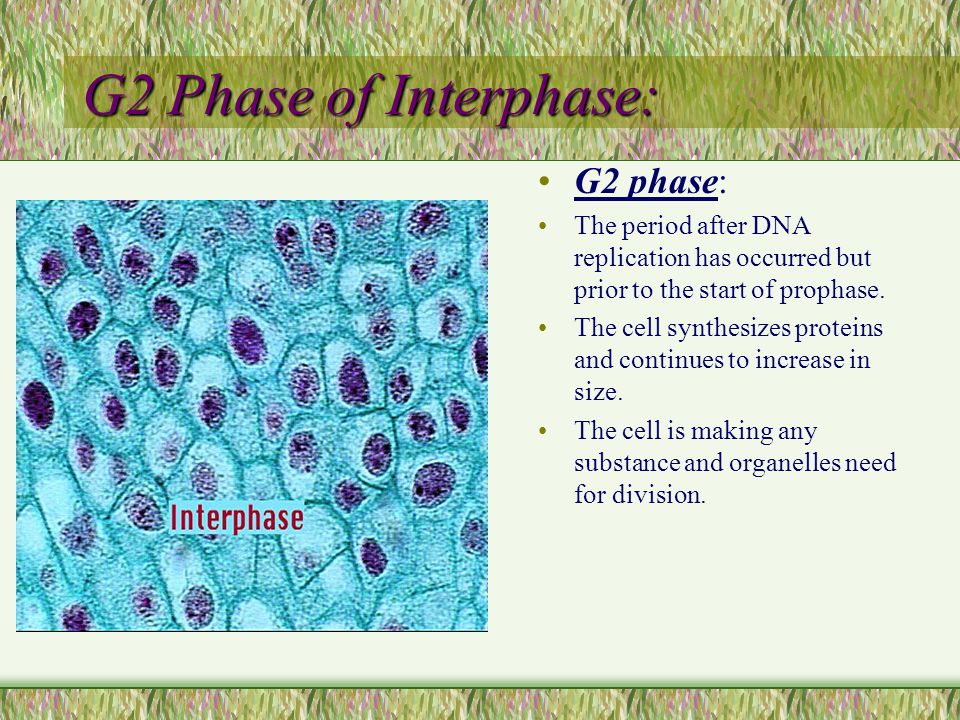ppt video online download Biology Diagrams Importantly, this phase ensures that everything is in place for DNA synthesis to occur in the next phase. S Phase (Synthesis): During this phase, the cell's DNA replicates. At the end of the S phase, each chromosome consists of two chromatids attached at the centromere. G2 Phase (Gap 2): Here, the cell continues growing and prepares for

The G2 phase is the third stage of the cell cycle that occurs after DNA replication and before mitosis. During this phase, the cell prepares for division by undergoing critical processes such as repairing any DNA damage, synthesizing proteins, and ensuring that all cellular components are ready for mitosis. The G2 phase plays a key role in maintaining genetic integrity and allowing for proper G2 is the shortest phase of interphase. It is when organelles and proteins necessary for cell division are produced. The cell requires a bunch of proteins and other stuff to separate the chromosomes and divide the cell in half. All of these materials are produced during G2. The cell also checks for DNA damage in this phase.

Cell Cycle Phases and Checkpoints Biology Diagrams
G 2 phase, Gap 2 phase, or Growth 2 phase, is the third subphase of interphase in the cell cycle directly preceding mitosis.It follows the successful completion of S phase, during which the cell's DNA is replicated.G 2 phase ends with the onset of prophase, the first phase of mitosis in which the cell's chromatin condenses into chromosomes.. G 2 phase is a period of rapid cell growth and

When eukaryotic cells divide, they undergo a complex process with four main stages, including a G2 phase. The **cell cycle** includes steps such as cell growth, DNA replication and mitosis (a critical topic in cell biology). Because eukaryotic cells have a nucleus that also has to be duplicated, the overall process is more complicated than the binary fission used by prokaryotic cells, which
..jpg)
What Happens in the G1 and G2 Phases of The Cell Cycle? Biology Diagrams
The G 2 /M phase is necessarily a transient state in which the morphology of the plasma membrane becomes analogous to a bicontinuous cubic phase (Fig. 7) [31,32,77,78]. This type of lipid assembly has been reviewed in some detail recently [79,80] , including its relevance to biological systems [30,81,82] . Cell growth is central to the cell cycle, and this is the primary purpose of interphase. At the end of this phase, there is double the amount of DNA, centrioles have replicated, and the cell is big enough for cell division. Interphase consists of the first growth (G1 phase), Synthesis (S phase), and the second growth (G2 phase) phases (figure 1 The cell cycle consists of a timed sequence of events that occur during interphase and mitosis (M). Interphase is made up of the G 1 (G = gap) phase, the S (synthesis) phase, and the G 2 phase (Fig. 15-2).Both G phases contain checkpoints that govern whether the cell moves into DNA replication (G 1 checkpoint) or into mitosis (G 2 checkpoint).. The G 1 and G 2 phases involve the synthesis of
